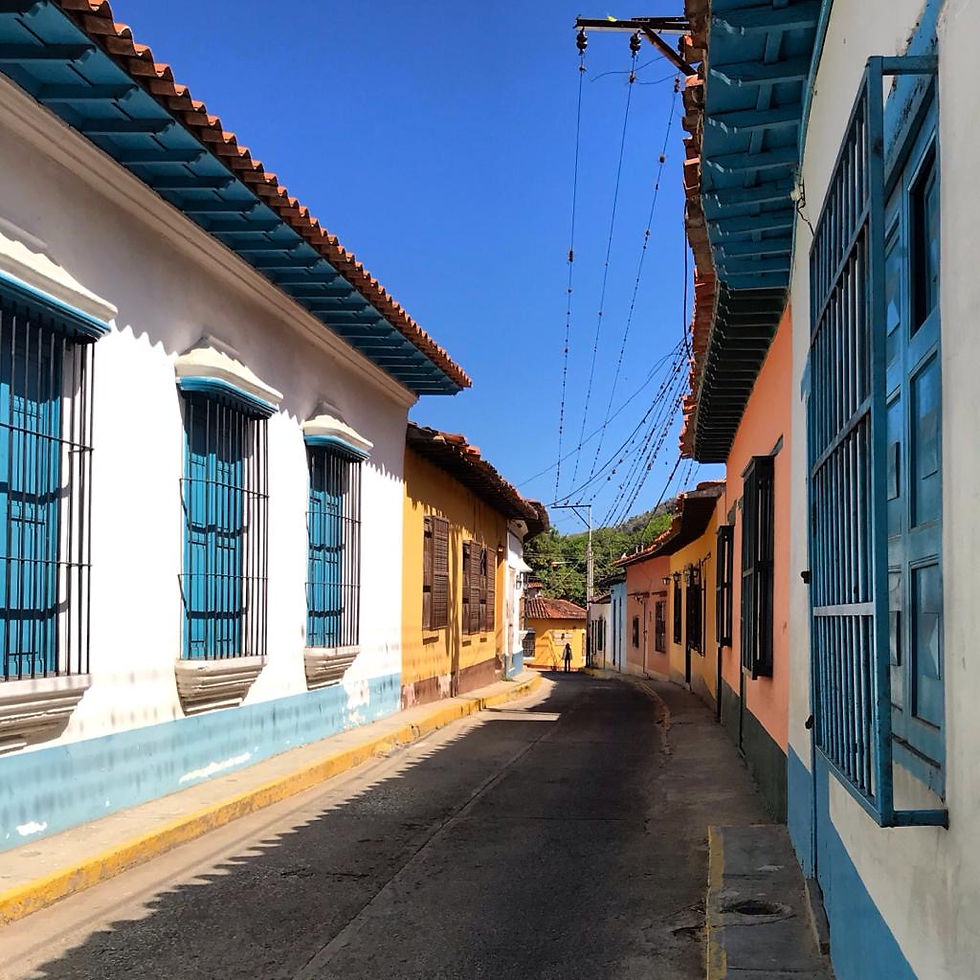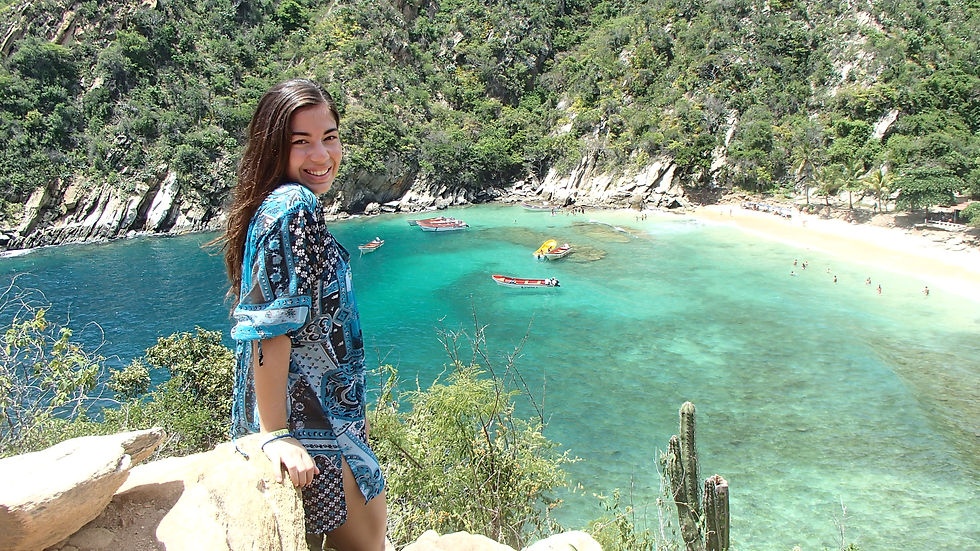Vibrant Colors of Choroní
- Rashel Cedeño De Abreu

- Jan 27, 2020
- 4 min read
Updated: Mar 2, 2020

Most of the Venezuelan paradises are hidden, as it is in the case of this small town I visited. Choroni, in the coast of the Aragua state, is better known for the beautiful beaches and vibrant colors of its village. It is located inside the Henri Pittier National Park with a population of less than 5000 people; mostly African descendants of settlers from the colonial times that have worked as fishermen generation to generation.
Choroni is three hours away from Caracas, the capital city, and to get there one has to drive in a narrow uphill road through a cloud forest. Many buses make their way through, which makes it easier for dozens of tourists to get there weekly. As it is considered one of the most dangerous roads in the country because of its deadly curves, the bus drivers are incredibly skilled. There is not a single white line and even less a reflector or any kind of pavement markers, so the trip must be done during the daytime.
In my case, my uncle drove us there in a 4x4 Jeep, and he had to be extremely careful as the path is unbelievably small for a two-way road, so he had to watch out for vehicles coming from the opposite direction, as there is not much visibility because of the sharp curves.

Once we arrived to our destiny, the first thing you see through the narrow streets is the colonial architecture of the small village, it has been preserved by the people by remodeling them in the inside and keeping the facades with bright rainbow colors. Even the buses are colorful with drawings and quotes on them.
As an interesting fact, in Venezuela, every town has a square named “Plaza Bolivar” in honor to South America’s main hero of independence, General Simón Bolívar,
‘The Liberator’, as he was born in Venezuela and led the missions that freed 5 countries from the Spanish conquerors. Choroni’s Plaza Bolivar is full of sea-food restaurants, street vendors and one catholic church for tourists to walk around. Crime rate is low; however, I do recommend taking precautions, specially for foreigners.
The establishment we stayed in was a small hotel in the village about a 15-minute walk from the beach, with breakfasts included and rooms with clean beds and A/C. Very important to have during the nights, as the temperatures go from 90 to 100 degrees Fahrenheit.

During this weekend-long trip we visited two beaches, Cepe and Tuja. Our first day, on a Saturday, we walked to Puerto Colombia, a very crowded boat harbor that takes you to the beaches since most of them can only be accessed to from a boat because of the big mountains that surround them.
In fact, boatmen from Choroni are so used to the sea that on several occasions, buses have been transported from the Port to the beach, but not on a ferry as one would think, but carried in small boats. A video taken of this feat has been viral through social media as it is almost an unimaginable situation that I believe, represents accurately the magic realism characteristic of Latin America.
Therefore, I trusted the boat driver that took us to Cepe Beach in 25 minutes. I am used to sailing in rough high tides, but for those who are not, I would recommend being aware and taking the necessary precautions since this could be a problem as the ride gets bumpy. I always suggest taking anticholinergics half an hour before taking the boat for the dizziness and nauseas from the sea sickness.
Our first destination, Cepe Beach, is famous for its scuba diving school, snorkeling practices and the palm trees that protect the campers during their stay. There are many fishermen selling lunch and the most popular seafood plates are snapper, sea bass, ceviche, and many more aphrodisiac delicacies typical from the Venezuelan coast like rompe colchón (mattress breaker), vuelve a la vida (come back to life) or siete potencias (seven powers) that mix clam, shrimp, scallop, squid, octopus, and more, with a lot of spices. The names are peculiar, but I promise the fusion of tastes is divine.
Our second destination, Tuja Beach, has made Choroni very famous in the past few years, as it only started being visited since 2016, when the community decided to open it to the public. Before that, it was desolated because of its large distance without any kiosk of food or place for camping. The boat trip is up to an hour long in the best days, and there is not even a port to get off the boat once you get to the beach, you have to jump to the water and walk to the shore. Its white sand and turquoise waters, calm enough to make it a destination for paddle boarding, have given it a tremendous popularity.

A must-do in Tuja is to hike up to the peak of the mountain to get a view of the whole beach. The way up is rough, and it takes about 30 minutes, but once you get there, the landscape is breathtaking. The green colors from the sea and the mountain are the perfect combination. I stood there contemplating the salty smell and the fresh air from above, admiring the immensity of the ocean, feeling blessed for witnessing the wonders of nature.
After this two-day escape to the coast of the Aragua state, surrounded by the mountains, and the vibrant colors of Choroni, I can say that the drive through the deadly dangerous road is totally worth it. I was received with smiles, kindness, and the hospitality of its people, the good food and the warm Caribbean Sea, as peaceful as it always is.
For more pictures: click arrow on slideshow or visit the gallery.



























Comments